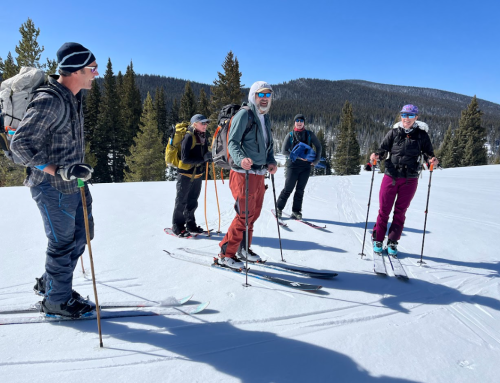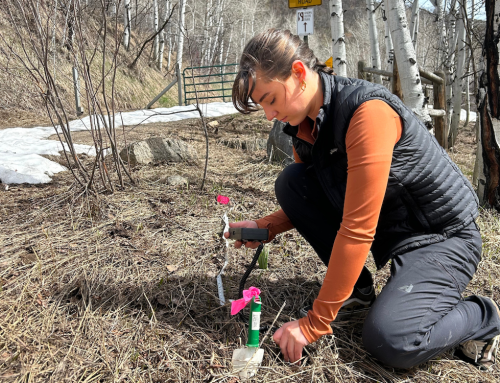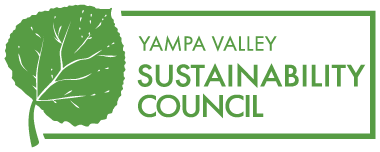My name is Rachel Santi, and I am an intern with Yampa Valley Sustainability Council (YVSC) and a student in the Sustainability Studies and Outdoor Education programs at Colorado Mountain College. Through this engaging internship program, I have the  pleasure of working with Madison Muxworthy, Soil Moisture, Water and Snow Program Manager, Tim Sullivan, Resilient Land and Water Director and Nicole Pepper, Geospatial Analyst and Internship Program Manager.
pleasure of working with Madison Muxworthy, Soil Moisture, Water and Snow Program Manager, Tim Sullivan, Resilient Land and Water Director and Nicole Pepper, Geospatial Analyst and Internship Program Manager.
YVSC has partnered with the Center for Western Weather and Water Extremes (CW3E) and Colorado Mountain College to implement a soil moisture monitoring network to better understand water resources in the Yampa River Basin. For more information on this project visit our webpage: https://yvsc.org/soil-moisture-monitoring-network/. Throughout the internship term, I have conducted research to examine different data platforms used to communicate climate science and held partner meetings to gain input from other organizations on how they share and communicate data to influence how data is interpreted. The main goal of my project is to address best practices for interpreting climate data and to address how we can reach a diverse group of people who want to use soil moisture data in their everyday lives but don’t understand the current data platform. To visit the current data platform, visit CW3E’s website: https://cw3e.ucsd.edu/cw3e-surface-meteorology-observations/. Through this project, I will organize and compare data platforms and create a conceptual design for soil moisture data.
The article “Skill in Streamflow Forecasts Derived from Large-Scale Estimates of Soil Moisture and Snow” by Koster et. al, suggests that soil moisture is an important measurement in improving streamflow and snowpack predictions used by water managers. When soil is dry below the snowpack, the snow melt infiltrates in the soil rather than going into the streams (Koster et. al, 2010). Accurate predictions of water availability are necessary actions as we move forward and exhibit an enhanced balance of coexistence with our natural world. In other words, “if nature doesn’t get the water it needs, it’s only a matter of time until we don’t either” and soil moisture is a key attribute in our complex mountain ecosystems (The Nature Conservancy). If we choose to conserve natural resources in an equitable manner it can have a vast impact on the future of our community.
While it has become a known fact that water supply in the west is trending downward, I believe there is still room for hope. With the introduction of the soil moisture monitoring network, YVSC has been collaborating with CW3E, Friends of the Yampa, Aspen Global Change Institute and many other climate initiatives to work together and influence water management practices, conversations and strategies that we can adapt to as a society in our everyday lives. Through mindful techniques and strategies, our everyday choices can affect the place we live in a more sustainable manner.
Soil and water are the foundation of life on Earth. As a community, we can use the future soil moisture data platform to understand how water resources are changing in the Yampa River Basin in response to climate change.






